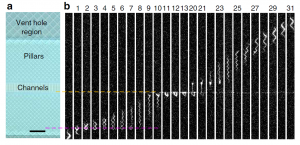 Researchers from the Mace lab at Tufts University recently published an article in Scientific Reports highlighting their new open-source CAD software that is tailored for the design of paper microfluidic devices. The software works across all OS platforms, appears fairly straightforward and user-friendly, and likely capable of covering most of the normal aspects of geometrical design for channel networks, based on examples presented.
Researchers from the Mace lab at Tufts University recently published an article in Scientific Reports highlighting their new open-source CAD software that is tailored for the design of paper microfluidic devices. The software works across all OS platforms, appears fairly straightforward and user-friendly, and likely capable of covering most of the normal aspects of geometrical design for channel networks, based on examples presented.
The software is provided by the authors gratis in a laudable effort to reduce the costs associated with chip design, especially for resource-constrained environments such as schools and labs in developing countries. The price for subscription or purchase of industry-standard CAD software can be prohibitive, easily reaching tens of thousands of dollars, and scaling with the number of users, etc. Removing the cost of design SW breaks down a significant cost barrier to innovation for paper microfluidics, a technology that otherwise boasts very economical costs for consumable materials (paper) and fabrication (wax printing with commercially available printers).

